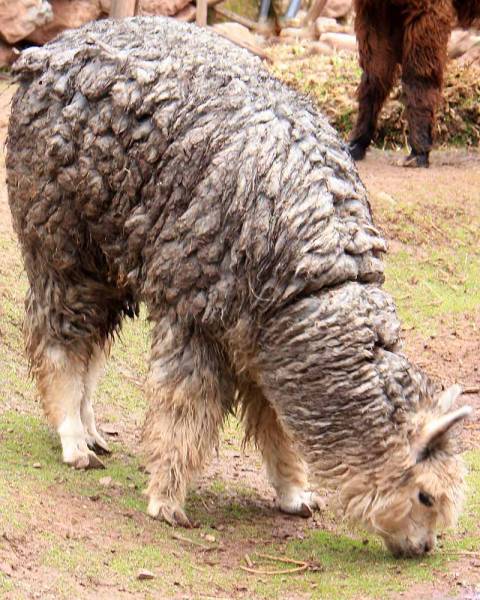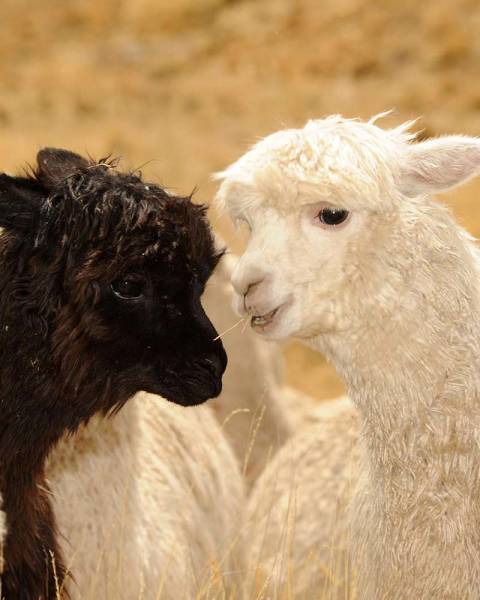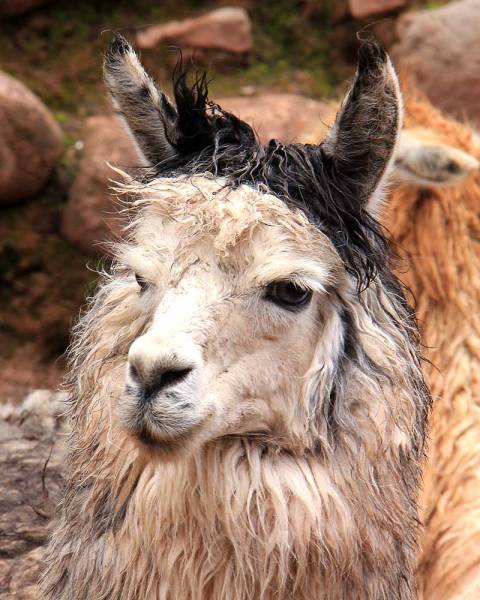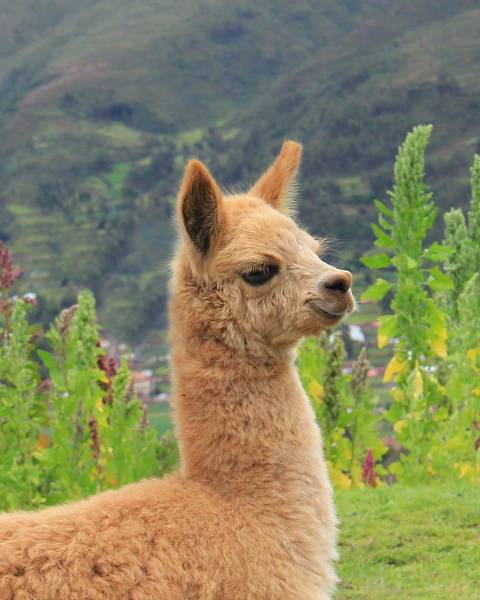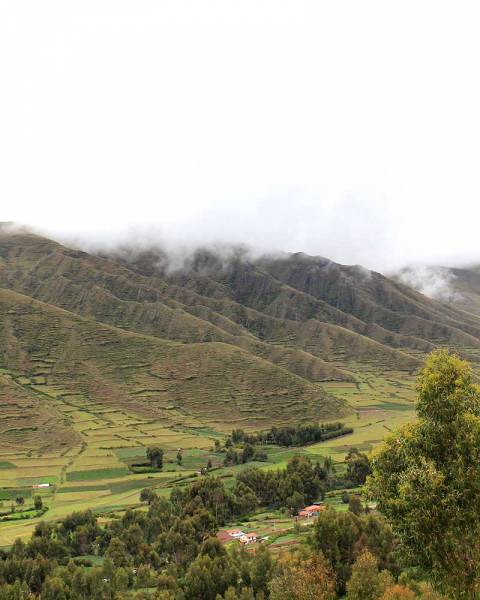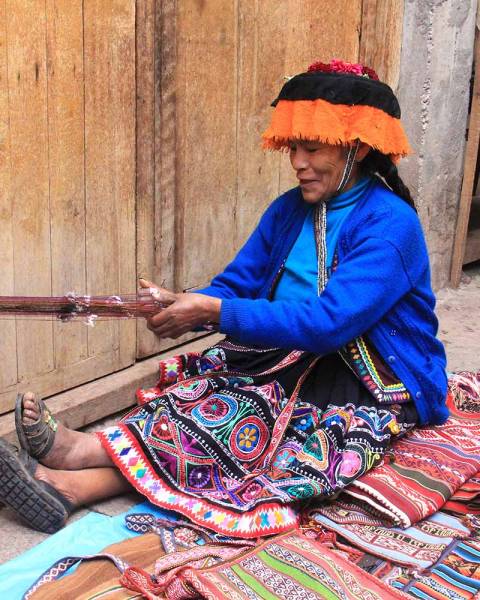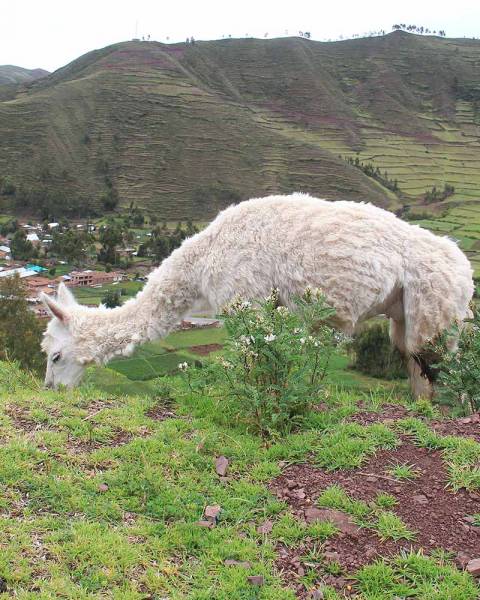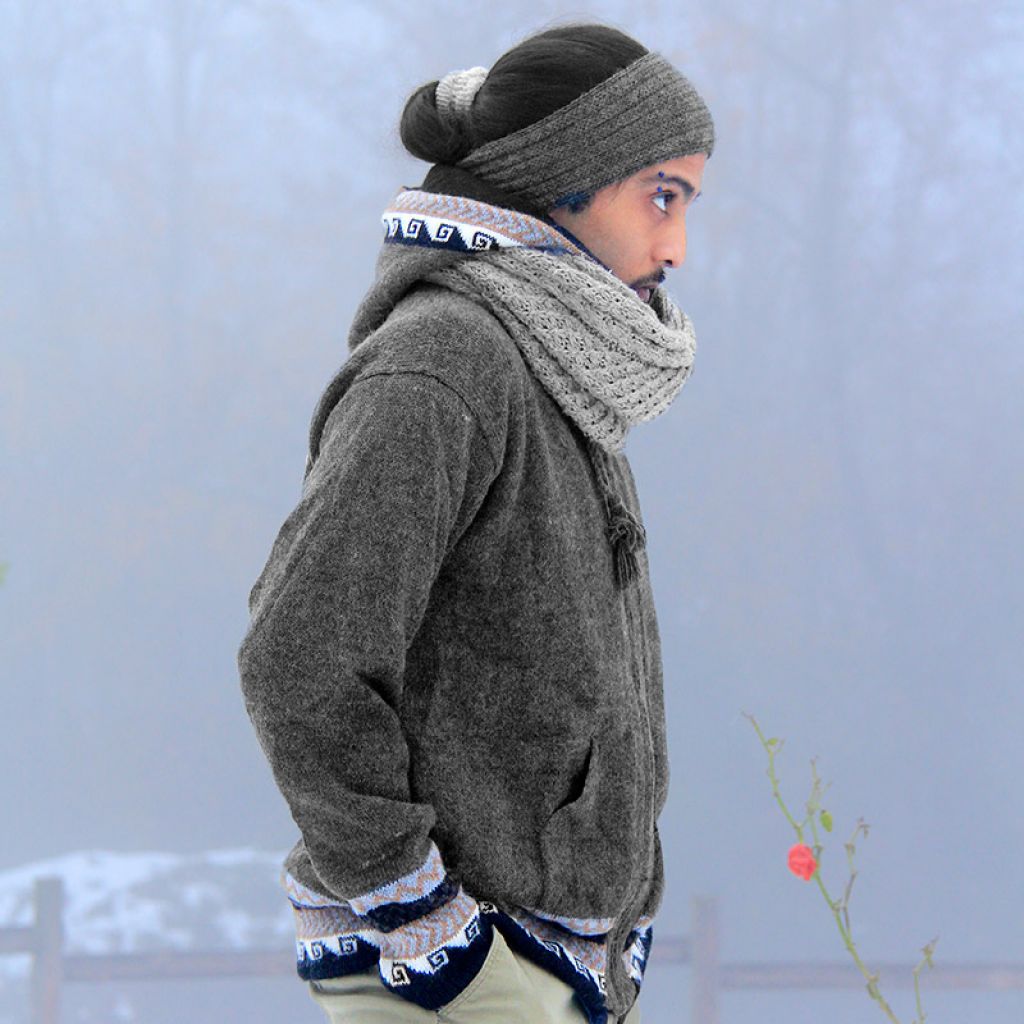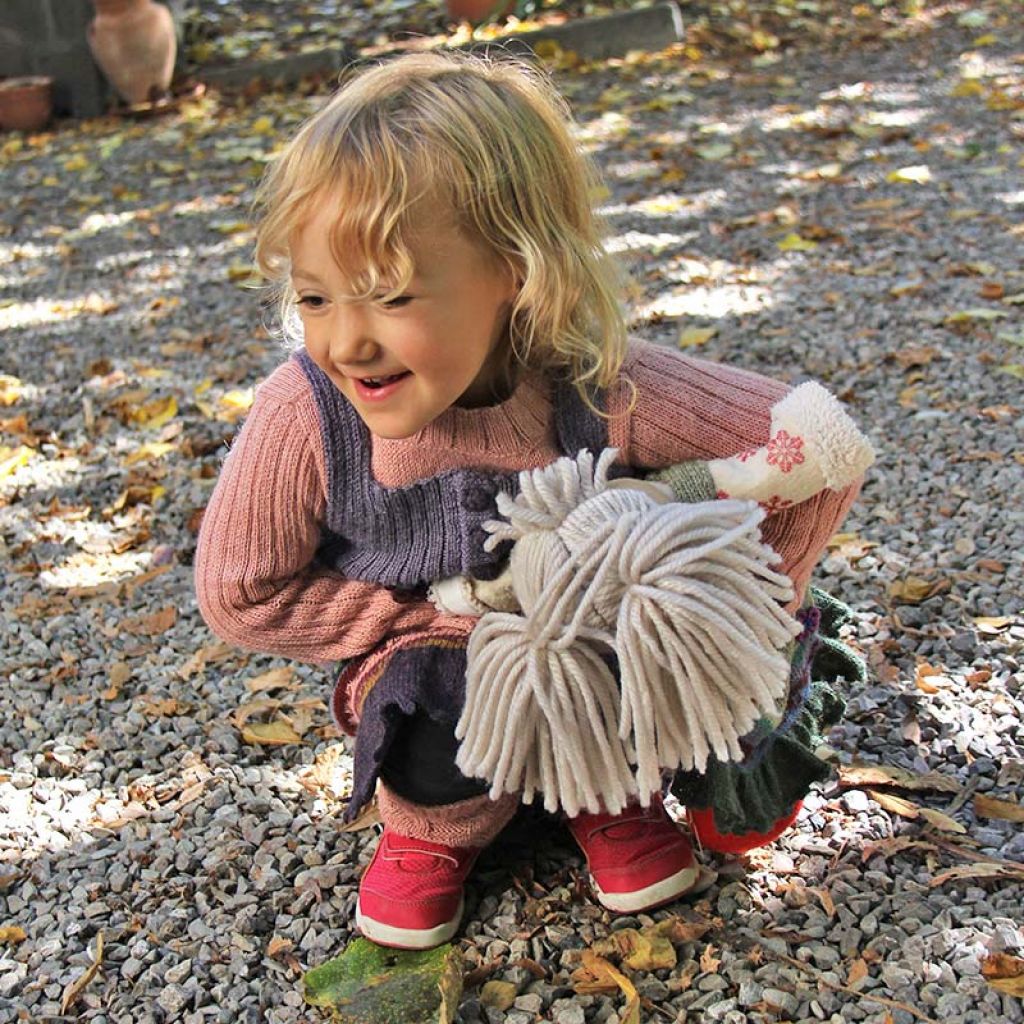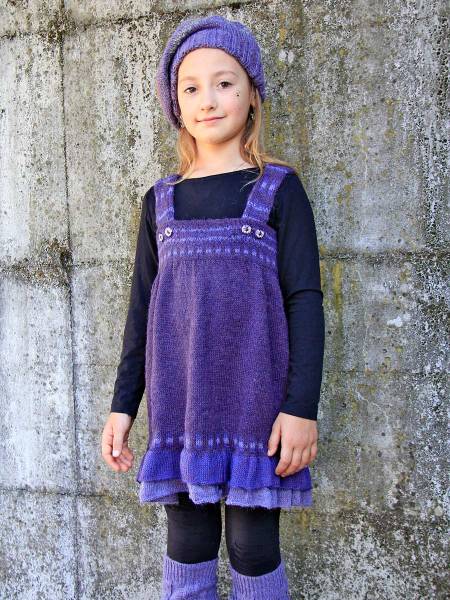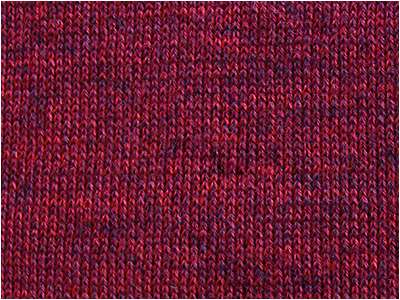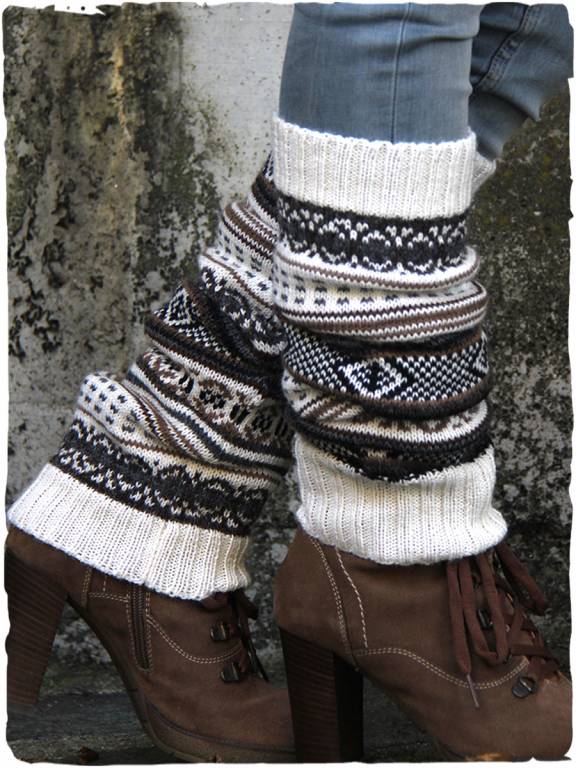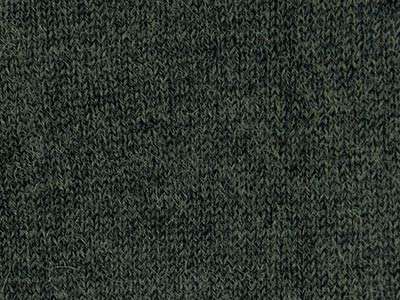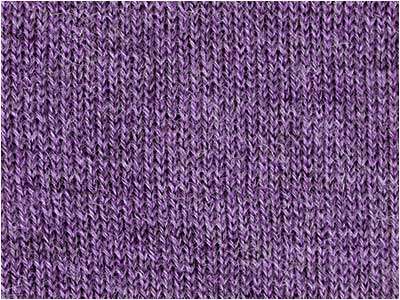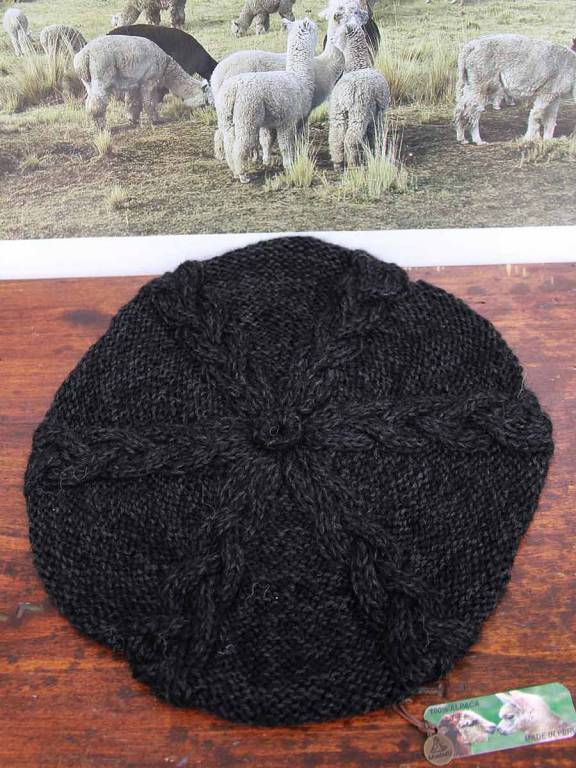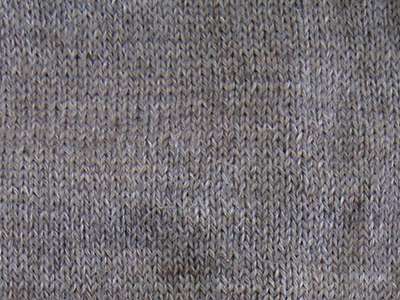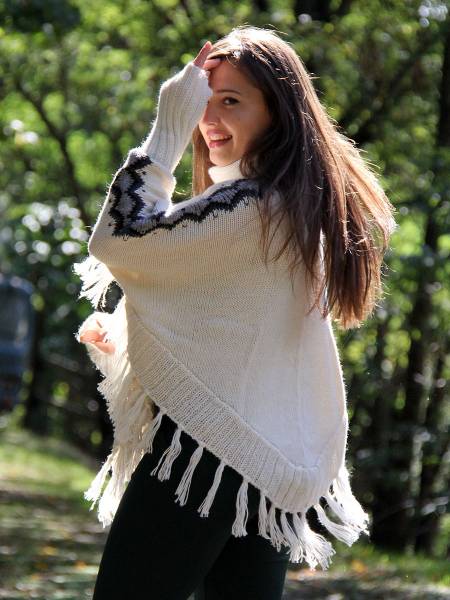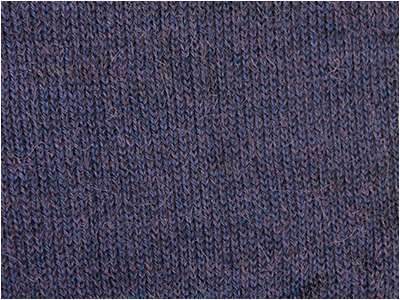The alpaca is a camelid very similar in appearance to the llama, which lives in South America and is particularly widespread in the Andes mountain range in Peru. Although many people think it’s a llama, it differs from it both by its fleece and by its size. The alpaca is normally much smaller and lighter than the llama.
Llama or camel? Alpaca!
There is also another big difference between alpacas and llamas. Unlike llamas, alpacas are not used as pack animals. They are bred for their fleece, which is normally shorn once a year, to obtain their prized wool.
Alpaca wool
There are two "rasas" (Spanish for breeds) of alpacas: huacaya and suri. These two breeds are distinguished by the different consistency of their hair fibres. Surialpacas have a longer fleece than huacayas, which hangs in curls on the animal’s body. The suri alpaca has a particularly shiny fleece that is soft as silk. In contrast, the fleece of the huacaya alpaca grows vertically, straight out from the animal’s body. It is fine, wavy and very thick.
These qualities make it is especially suitable for producing heavy knitwear for the winter, such as coats, sweaters, socks, boleros and ponchos.
Both breeds weigh between 65 kg (females) and 70 kg (males). The suri’s long hair can trick the eye, making it look like the larger huacaya alpaca. About 90% of alpacas are of the huacaya breed, while only 10% are suris.
Alpaca wool is renowned for its thermal qualities and great softness. According to the Peruvian breeders, the animals bred at high altitudes, above 4,000 metres, have softer wool. Another unique feature of alpaca fleece is that it can be dyed in a wide range of colours: 22 different colours, ranging from milk white to pitch black.
The alpacas that produce the wool for our ethnic garments are bred and sheared in their natural habitat, the Andean mountain range in Peru.
Alpacas are an important source of income for the Peruvian people
Eighty per cent of world production of alpaca wool comes from Peru. Over 2.5 million alpacas are bred there. The breeding, shearing and processing of alpaca fleece to produce the prized wool, is of economic importance to the Andean population.
Whole generations of Peruvian families from the Andes have devoted their lives to breeding alpacas. They are undoubtedly the world’s leading experts in processing alpaca wool. In fact, they handle not only the breeding and shearing, but also the entire processing chain to produce the prized wool. They are masters of weaving, dyeing, cutting and embroidery. All the wool used in our clothing comes from here. We currently employ about 100 workers in the Peruvian Andes.

